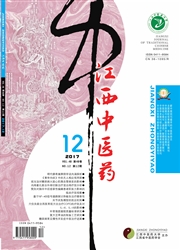

 中文摘要:
中文摘要:
目的:研究常见乳腺癌患者癌因性疲乏与使用化疗药所致的不良反应的相关性.方法:选择100例乳腺癌患者,在化疗前后均按癌症疲乏量表(CFS)评价患者的乏力程度,建立CRF-ADR综合评价量表,并在化疗前后检测与疲乏可能相关的各种因素,包括人肿瘤坏死因子-α(TNF-α)、白介素1(IL-1)、转化生长因子-β1(TGF-β1)水平及人尿中17-羟皮质类固醇(17-OHCS)在化疗结束后记录化疗不良反应情况分成有不良反应组及无不良反应组,进行分组统计学检验及相关性分析,探讨分析乳腺癌癌因性疲乏与化疗药引起不良反应的相关性因素.结果:全组100例乳腺癌患者中乏力发生率90%.全组出现化疗后相关不良反应的共有18例,占总例数的18%.化疗后出现人血中TNF-α水平异常升高81例(81.O%),差异有统计学意义;化疗后出现IL-1水平异常升高68例(68%),差异有统计学意义;化疗后出现人尿中17-OHCS水平异常升高11例(11%),其中有8例出现化疗后相关不良反应,占不良反应人数的44.4%(8/18),差异有统计学意义(P=0.0007),TGF-β1水平异常升高4例,差异无统计学意义.结论:人TNF-α及IL-1与患者癌性疲乏有密切关系,而人尿中17-OHCS水平的异常升高可能是预测发生化疗后相关不良反应的重要监测指标.
 英文摘要:
英文摘要:
AIM: To prospectively explore the relationship and its possible mechanism between cancer-related fatigue and chemo- therapy-induced adverse effects in patients with breast cancer. METHODS : One hundred patients with an array of cancers were recruited in a survey on general condition according to the Cancer Fatigue Scale (CFS) prior- and post-chemotherapy. A suit of fa- tigue-associated factors including TNF-α, IL-1, TGF-IMand 17- OHCS were detected and determined with subsequent statistical and relevance analysis based on Comprehensive Appraisal Scale. RESULTS : There are 90% patients with fatigue in all groups and 18 ( 18% ) patients with chemotherapy associated fatigue. The se- rum level of TNF-α was significantly elevated in 81 (81%) pa- tients after chemotherapy with statistical significance. The Inter- leukin-1 ( IL-1 ) was elevated in 68 (68%) patients after chemo- therapy, and it has significance in statistics. The urine 17- hydroxycortisteroids (17-OHCS) were elevated in 11 (11%) pa- tients after chemotherapy, 8 of whom with post-chemotherapy as- sociated adverse reaction, which accounting for 44.4% in the to- tal number of patients with chemotherapy induced adverse effect, P〈0.01. It has significance in statistics. The TGF-β1 was ele- vated in 4 patients after chemotherapy, P 〉 0.05, which has no significance in statistics. CONCLUSION: Human serum TNF-α and IL-1 are tightly linked to cancer-related fatigue, and abnor- mally elevated 17-hydroxycortisteroids (17-OHCS) in urine mightbe a promising predictor for chemotherapy-induced adverse effects.
 同期刊论文项目
同期刊论文项目
 同项目期刊论文
同项目期刊论文
 期刊信息
期刊信息
